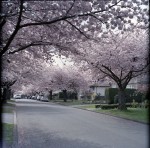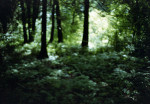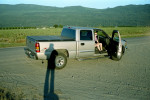Dec
28
2015
 Every once and a while I try a camera so bad that I have to ask myself whether I should destroy it to spare any other poor soul from its awfulness. In this case I present to you the Fuji S which I can only assume stands for (S)hit. It’s not that I had high expectations for this camera that were dashed. It’s cheap plastic materials and 125gram weight ease that notion from your mind. No it’s the fact that it offers a 26mm lens which is unique enough to stir attention but it turned out to be as soft as a flaming marshmallow. The lens is made from 3 elements in three groups and has a maximum aperture of f5.6. The shutter speed is fixed at 1/70 second which is fast enough but if it doesn’t vary and the aperture doesn’t vary then essentially the exposure doesn’t vary. The camera does take AAA batteries which is nice. Fuji has made some incredible cameras over the years so when they produce something like this 2004 abomination it seems out of step. So if your holding a roll of film in one hand and a Fuji S in the other do yourself a favour and recycle the camera and put the film into something more worthy like a Fuji Dl Super Mini or if you need 26mm a Canon Sure Shot BF-10 which will give you that and shutter speeds from 1/250 second to 1/40 second to boot.
Every once and a while I try a camera so bad that I have to ask myself whether I should destroy it to spare any other poor soul from its awfulness. In this case I present to you the Fuji S which I can only assume stands for (S)hit. It’s not that I had high expectations for this camera that were dashed. It’s cheap plastic materials and 125gram weight ease that notion from your mind. No it’s the fact that it offers a 26mm lens which is unique enough to stir attention but it turned out to be as soft as a flaming marshmallow. The lens is made from 3 elements in three groups and has a maximum aperture of f5.6. The shutter speed is fixed at 1/70 second which is fast enough but if it doesn’t vary and the aperture doesn’t vary then essentially the exposure doesn’t vary. The camera does take AAA batteries which is nice. Fuji has made some incredible cameras over the years so when they produce something like this 2004 abomination it seems out of step. So if your holding a roll of film in one hand and a Fuji S in the other do yourself a favour and recycle the camera and put the film into something more worthy like a Fuji Dl Super Mini or if you need 26mm a Canon Sure Shot BF-10 which will give you that and shutter speeds from 1/250 second to 1/40 second to boot.
no comments | posted in Cameras, Photography
Dec
23
2015

I have a limited selection of lenses for my Konica Autoreflex T but one of them is a 57mm f1.4 which is a little longer than most lenses considered to give a normal view on 35mm film. Also at 1.4 its quite fast and helps supply a nice bright viewfinder image which is good because it also provides very shallow depth of field which I may have gone a little wild with on this roll of film. I really like the bokeh and general look from the lens although images from it can stand a little boost in contrast.
no comments | tags: film, Konica | posted in Cameras, Photography
Dec
18
2015

While this Ikonta M has a rangefinder for focusing it and the viewfinder are separate which complicates and slows down the process of focusing. There is a side benefit to this though in that the rangefinder is somewhat magnified allowing the focusing patch to be zoomed in when compared to the frame used for composition. This enlargement affords more precise focusing which can be critical with the shallow depth of field possible with this camera and medium format film. Another feature of this camera is that it locks out the shutter release until the film is advanced, a common feature now but not a given on older cameras. It prevents that moment when you have to decide whether to risk double exposing an image or wasting a frame because you can’t remember if you advanced the film last time or not.

From the sharp center to the riotous distortion in the corners and the smooth out of focus backgrounds there is always something distinct happening in images from this lens. No this camera is not going to provide a better image than what you can get with a digital camera but it is going to be different.
no comments | posted in Cameras, Photography
Dec
10
2015
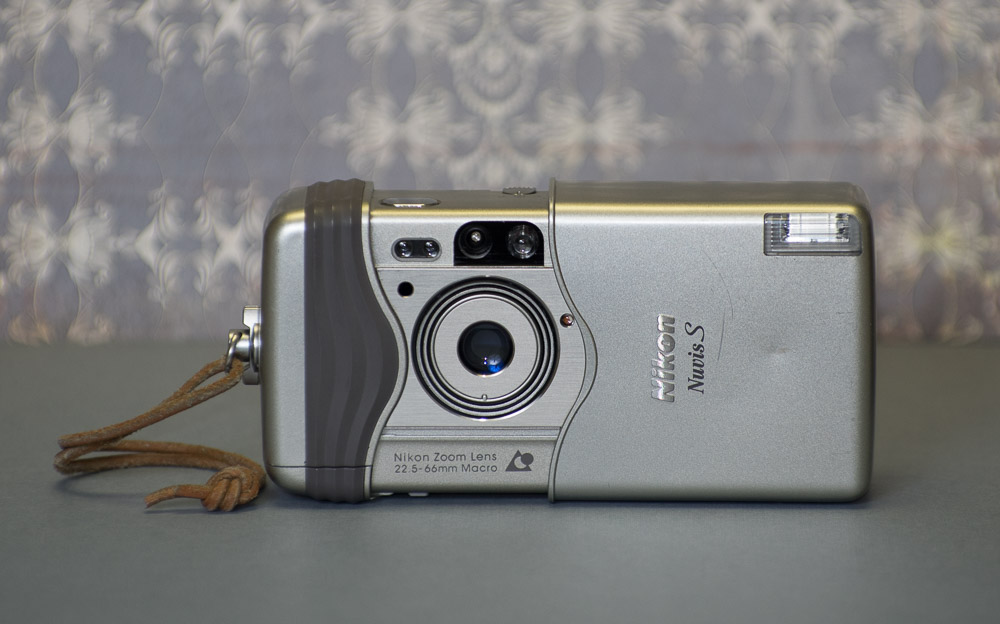
I don’t make all my decisions around what camera to use based solely on their photographic ability, if that were the case I would have settled on a few really good cameras and that would be the end of it. I also use some cameras just because they are interesting or were a technological milestone. The APS film format was a dead end that a few camera makers went down but not for long with the advent of digital cameras right behind them. Although when they did make APS cameras they were more innovative than they had been for years and some of the design touches made it into the digital camera realm. The Nikon Nuvis S though is pure APS design and it stands out for it. Taking the idea of the clamshell a step further than a simple lens cover when closed nothing but the flash remains exposed.
The camera is made from metal instead of plastic and sports a 22.5-66mm lens with 6 elements (two of which are aspherical). That works out to a focal length equivalent to 28-83mm on 35mm film which is nice and wide just what I like.
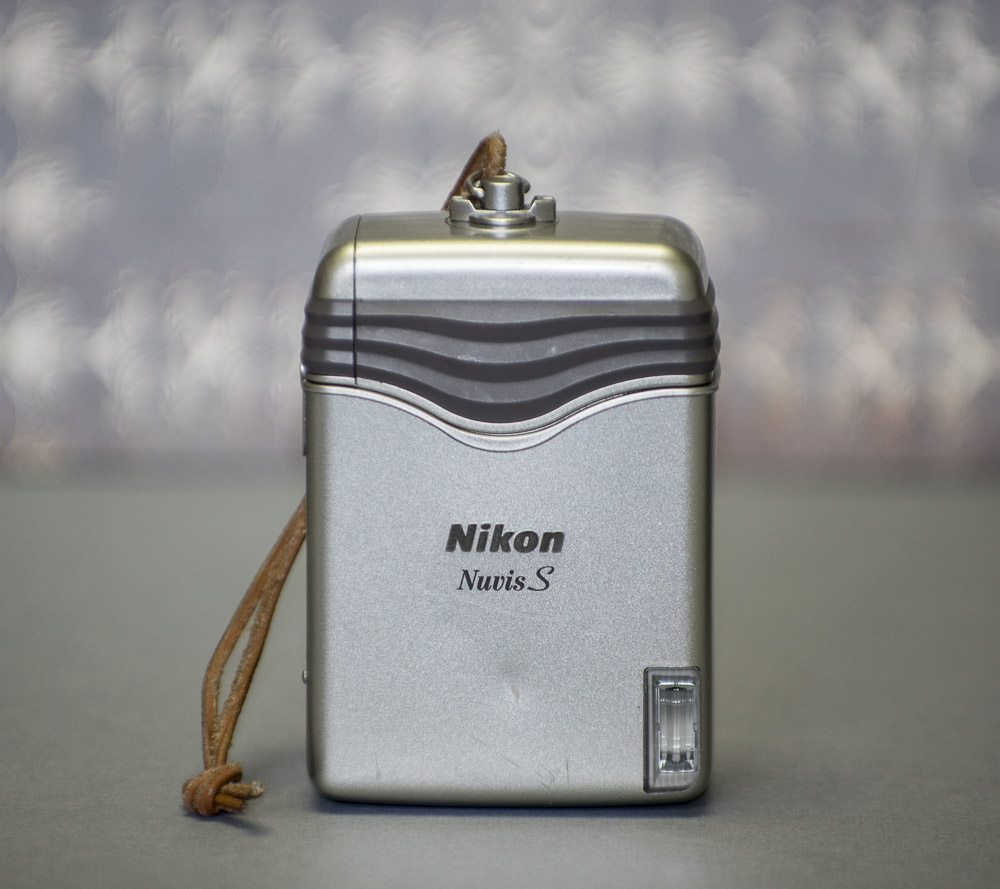
It is a nice looking camera both closed and open, and that’s some bad outdated APS film.
no comments | tags: Aps film, Nikon | posted in Cameras, Photography, Uncategorized
Dec
3
2015

The Ricoh Autoshot is interesting for several reasons. The primary one is its lack of a film winding lever, that function is done through a clock spring wound on the bottom. The effect is that the film is advanced and the shutter cocked automatically. That is something you don’t normally consider with a digital camera or a point and shoot film camera from about the mid 1980’s on but for the mid 1960’s it was pretty revolutionary. Another interesting thing is the auto exposure system that uses a selenium meter surrounding the lens. Also the placement of the shutter button on the front, it’s actually more of a slider than a button. The shutter uses only two speeds either 1/30 for use with flash or 1/125 for the auto exposure system. The focus is also a zone system with 4 presets for 3ft/6/15/and infinity. I’m not sure if it is technically the first ‘Point and Shoot’ camera but aside from autofocus it checks off all the other boxes. You only need to compose a picture, press the shutter and repeat and you don’t even need batteries to do it.
no comments | posted in Cameras, Photography
 Every once and a while I try a camera so bad that I have to ask myself whether I should destroy it to spare any other poor soul from its awfulness. In this case I present to you the Fuji S which I can only assume stands for (S)hit. It’s not that I had high expectations for this camera that were dashed. It’s cheap plastic materials and 125gram weight ease that notion from your mind. No it’s the fact that it offers a 26mm lens which is unique enough to stir attention but it turned out to be as soft as a flaming marshmallow. The lens is made from 3 elements in three groups and has a maximum aperture of f5.6. The shutter speed is fixed at 1/70 second which is fast enough but if it doesn’t vary and the aperture doesn’t vary then essentially the exposure doesn’t vary. The camera does take AAA batteries which is nice. Fuji has made some incredible cameras over the years so when they produce something like this 2004 abomination it seems out of step. So if your holding a roll of film in one hand and a Fuji S in the other do yourself a favour and recycle the camera and put the film into something more worthy like a Fuji Dl Super Mini or if you need 26mm a Canon Sure Shot BF-10 which will give you that and shutter speeds from 1/250 second to 1/40 second to boot.
Every once and a while I try a camera so bad that I have to ask myself whether I should destroy it to spare any other poor soul from its awfulness. In this case I present to you the Fuji S which I can only assume stands for (S)hit. It’s not that I had high expectations for this camera that were dashed. It’s cheap plastic materials and 125gram weight ease that notion from your mind. No it’s the fact that it offers a 26mm lens which is unique enough to stir attention but it turned out to be as soft as a flaming marshmallow. The lens is made from 3 elements in three groups and has a maximum aperture of f5.6. The shutter speed is fixed at 1/70 second which is fast enough but if it doesn’t vary and the aperture doesn’t vary then essentially the exposure doesn’t vary. The camera does take AAA batteries which is nice. Fuji has made some incredible cameras over the years so when they produce something like this 2004 abomination it seems out of step. So if your holding a roll of film in one hand and a Fuji S in the other do yourself a favour and recycle the camera and put the film into something more worthy like a Fuji Dl Super Mini or if you need 26mm a Canon Sure Shot BF-10 which will give you that and shutter speeds from 1/250 second to 1/40 second to boot.

































